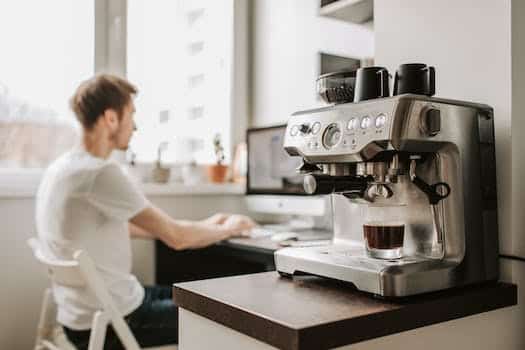It is crucial that you change the remote desktop’s default password. You are putting your system at danger by using the default password, given the growing concerns of cyberattacks. This post will go over the importance of altering the remote desktop password by default and how doing so can improve system security.
- 1. Introduction
- 1.1. What is a default remote desktop password?
- 1.2. Why is it important to change the default password?
- 1.3. How default passwords can pose security risks
- 2. Common default remote desktop passwords
- 2.1. Admin
- 2.2. Administrator
- 2.3. Password
- 2.4. 123456
- 2.5. Default
- 3. Steps to change the default remote desktop password
1. Introduction
Remote desktop connections have become essential for many individuals and enterprises in the current digital era. Remote access to a computer or server provides users with freedom and convenience, enabling them to operate from any location in the world. But this ease also necessitates more stringent security protocols. Changing a remote desktop’s default password is an important but frequently ignored step. The significance of changing the default remote desktop password and the possible dangers of doing so will be covered in detail in this article.
1.1. What is a default remote desktop password?
A pre-set password that is pre-assigned by the manufacturer to the remote desktop program or device is known as the default remote desktop password. It is a password that is frequently used as a stopgap until the user creates a custom password. Initially granting access to the remote desktop for administrative or troubleshooting needs is the goal of a default remote desktop password. Nonetheless, in order to guarantee the security of the remote desktop system, it is imperative that you modify this default password as soon as possible.
1.2. Why is it important to change the default password?
When it comes to remote desktop security, changing the default password is crucial. Since default passwords are frequently established by manufacturers and are well-known, hacking attempts may target them. You are practically giving illegal access to your remote desktop by not changing the default password. Numerous security threats, such as identity theft, data breaches, and unauthorized access to your system, may result from this.
In addition, default passwords are frequently shared across many devices, putting all of them at risk in the event that one is compromised. It is important to realize that hackers regularly search for these default passwords and are well aware of them. You can lessen your vulnerability to these kinds of assaults by altering the default password.
You can also make sure you have complete control over who may access your remote desktop by changing the default password. Only you and others you have given permission to log in will be able to access your unique password. This aids in preserving the integrity and privacy of your data and system.
Finally, one of the most important steps towards improving remote desktop security is to change the default password. It guards against potential security lapses, illegal access, and other online dangers. You are strengthening the security of your remote desktop and protecting your sensitive data by performing this easy but important step.
1.3. How default passwords can pose security risks
Significant security problems might arise from default passwords, particularly when it comes to remote desktop credentials. With remote desktops, users may conveniently and flexibly access their computers or servers from a distance. But if the system’s default password is left unmodified, it may be open to hacker attacks and unwanted access.
Hackers can easily obtain illegal access to systems that lack a unique password because they are well-aware of the default passwords provided by manufacturers and service providers. This may result in several types of security lapses, theft of data, and even monetary loss.
Changing the default password as soon as feasible is essential to guaranteeing the security of your remote desktop. By doing this, you improve your system’s overall security and drastically lower the possibility of unwanted access. It’s also advised to choose difficult-to-guess passwords that are strong and complex.
For all users, changing the remote desktop password by default ought to be routine procedure. It is an easy-to-follow yet powerful procedure that will help you defend your system and your private data from harm.
2. Common default remote desktop passwords
Security ought to be the first consideration whenever it comes to remote desktop connections. The remote desktop software’s default password is one frequent weakness that many users ignore. Manufacturers and developers frequently establish these default passwords to facilitate the initial setup procedure. If you don’t update these passwords, though, your machine may become open to unwanted access.
It’s crucial to realize that default remote desktop passwords are public knowledge and are readily accessible on the internet. With this information, hackers and other bad actors could be able to access your remote desktop and compromise your confidential information, or even your whole network.
It is essential to update the remote desktop password as soon as possible to reduce this risk. You can make sure that only people with permission can access your remote desktop by doing this. Using secure, one-of-a-kind passwords that are difficult to guess is also advised. Your remote desktop connection’s security will be significantly improved by doing this.
A quick and easy way to secure your remote desktop is to change the default password. It lessens the possibility of possible security breaches and assists in defending your system against unwanted access. Remember that in today’s digital world, being proactive in protecting your remote desktop is crucial.
2.1. Admin
Administrator
‘Admin’ is a frequently used default remote desktop password of choice. Many times, system administrators or manufacturers select this password as the default. Regretfully, a lot of users neglect to update this password, which leaves their remote desktop open to unwanted access.
It is quite dangerous to use the default password, “admin,” as hackers may easily figure it out and it is well-known. Recognizing that sticking with the default password is like leaving your front door ajar is extremely crucial. Your sensitive data may be compromised if someone with malicious intent gains access to your remote desktop.
Changing the default password as soon as feasible is essential to maintaining the security of your remote desktop. Your protection against unwanted access is greatly increased when you choose a strong password that is one-of-a-kind.
Recall that a weak password is equivalent to a welcome party for hackers. Make the required precautions to secure your personal and confidential data as well as your remote desktop.
2.2. Administrator
Many administrators utilize default remote desktop passwords, which pose a serious security risk and should not be disregarded. Since these default passwords are frequently well-known and simple to get, hackers and other bad actors will find it simpler to access remote desktop systems without authorization. Administrators must be aware of how critical it is to alter these default passwords in order to guarantee the safety and security of their systems.
Admins expose their systems to potential attackers by failing to change the default remote desktop password. Given their widespread knowledge, default passwords are readily obtainable online or through other means by hackers. They can use a remote desktop system to carry out a variety of harmful tasks, such installing malware, stealing confidential data, or even taking over the machine altogether.
Changing the system’s default remote desktop password is an easy yet powerful technique to improve security. Administrators can drastically lower the chance of unwanted access by employing a strong, one-of-a-kind password. To make your password more difficult for hackers to decipher, it’s advised to combine letters, numbers, and unusual characters.
It is also necessary to update the remote desktop password on a regular basis. The techniques employed by hackers to get around security measures also change as technology does. Administrators can stay ahead of potential threats and guarantee the continued security of their systems by changing the password on a regular basis.
In conclusion, it is critical to change the remote desktop password that comes with the software. Administrators must take preventative measures to secure their systems by changing the default password to a strong, one-of-a-kind one. They can reduce the possibility of illegal access and keep private data out of the wrong hands by doing this.
2.3. Password
One major security concern associated with remote desktop connections is the use of default passwords. This post will go through some of the frequently used default remote desktop passwords and why it’s so important to change them.
Preconfigured passwords, known as default passwords, are established by the software developer or manufacturer. Since these passwords are frequently popular and generic, it will be simpler for unwanted users to access your remote desktop.
Required remote desktop passwords that are most frequently used are ‘admin,’ ‘password,’ ‘123456,’ ‘admin123,’ and ‘qwerty.’ Because these passwords are simple to figure out or break, hackers and other malicious actors can easily access your remote desktop.
Changing the default remote desktop password as soon as feasible is essential. You can protect your sensitive data and greatly lower the chance of illegal access by doing this. By adding an extra layer of security, changing the password makes it more difficult for hackers to take over your remote desktop.
Selecting a strong and distinctive password is advised in addition to altering the default one. A strong password should be made up of a mix of special characters, digits, and capital and lowercase letters. Don’t use passwords that are simple to figure out, such your name, birthdate, or a popular word.
It’s also crucial to change the password on a regular basis. Hackers discover new methods to break passwords and obtain illegal access as technology advances. Regularly changing your remote desktop password can help you stay ahead of any security risks.
To sum up, changing the default remote desktop passwords right away is advised as they provide a serious security risk. It is possible to improve the security of your remote desktop and safeguard your important information by choosing a strong and one-of-a-kind password and changing it on a frequent basis.
2.4. 123456
One of the most widely used default remote desktop passwords is 123456. It is astounding how many people still use this straightforward and simple-to-guess password. It is imperative that you change the remote desktop password by default. You are essentially opening your computer or network up to potential cyber threats if you don’t change the default password.
The default passwords that come with different remote desktop programs and devices are well known to hackers. They proactively look for systems that continue to use these default passwords because they offer a simple way for unauthorized users to gain access. After gaining access to your remote desktop, a hacker can quickly take advantage of your system, steal confidential data, or even carry out harmful assaults.
One easy, yet powerful, way to improve the security of your system is to change the remote desktop password that comes with it. You may almost entirely eliminate the possibility of unwanted access by selecting a strong, one-of-a-kind password. When creating a password, it’s best to combine letters, numbers, and special characters to make it challenging to figure out or use.
Recall that changing the password just once and then forgetting about it is insufficient. Updating your remote desktop password on a regular basis offers an additional degree of protection, guaranteeing that even in the unlikely event that someone manages to crack it, their access will be restricted and their unapproved presence will be noticed.
Finally, don’t undervalue the significance of altering the remote desktop’s default password. It is an essential step in protecting your network, computer, and private data from online attacks. To keep one step ahead of hackers, take the effort to create a strong password and change it on a regular basis.
2.5. Default
Making a customized food plan is a good strategy to reach your fitness and health objectives. You can make sure you are giving your body the nutrition it needs and adhering to your dietary requirements by personalizing your meals. This comprehensive guide will give you professional advice and mouthwatering recipes to help you design a nutritious and unique meal plan that works for your tastes and way of life.
3. Steps to change the default remote desktop password
Developing a nutritious meal plan entails combining a variety of foods that give our bodies the nutrition they need. Generally speaking, a well-balanced meal plan consists of a range of fruits and vegetables, healthy fats, carbohydrates, and proteins.
Proteins help us feel full and content and are essential for muscle growth and repair. Lean meats, poultry, fish, eggs, dairy products, lentils, and tofu are all excellent sources of protein.
Our bodies depend on carbohydrates as a major source of energy. Choose complex carbs, which are high in fiber and offer a consistent energy release, such as brown rice, quinoa, sweet potatoes, and whole grains.
Hormone production, cognitive function, and the absorption of fat-soluble vitamins all depend on healthy fats. Incorporate into your meal plan items such as almonds, seeds, avocados, olive oil, and fatty fish like salmon.
Vegetables and fruits are a great source of antioxidants, vitamins, and minerals. In order to make sure you are getting a wide range of nutrients, try to incorporate a variety of colored fruits and vegetables in your meals.
In addition to this, it’s critical to minimize added sugars, sodium, and bad fats, and to choose whole, unprocessed foods whenever feasible. You can make a wholesome, well-balanced meal plan that promotes your general health and wellbeing by using these ingredients in your meal plan.
3.1. Accessing the remote desktop settings
The key to a nutritious meal plan is a balance of macronutrients. Our bodies need macronutrients in large quantities in order to function correctly. They consist of lipids, proteins, and carbs.
Carbohydrates are present in foods like grains, fruits, and vegetables and give the body energy. Selecting complex carbohydrates, such as whole grains, is crucial since they offer additional fiber and minerals.
Proteins are necessary for the body’s numerous processes as well as for the synthesis and repair of tissues. Fish, poultry, beans, and legumes, as well as lean meats, are excellent providers of protein.
Certain vitamins cannot be absorbed without fats, and hormone manufacturing requires fats as well. Selecting healthy fats is crucial; these include the fats in nuts, seeds, avocados, and olive oil.
These macronutrients should be balanced in a healthy eating plan. You can accomplish this by including a range of foods from every dietary group in your meals and snacks. You can give your body the nourishment it needs to flourish and stay in peak health by doing this.
3.2. Locating the password settings
Including a range of fruits and vegetables in your meal plan is crucial for overall health. Fruits and vegetables are a great source of vitamins, minerals, and other nutrients that are good for our general health. They include vital fiber, phytochemicals, and antioxidants that help ward off chronic illnesses including diabetes, heart disease, and some forms of cancer.
You will receive a varied spectrum of nutrients if you incorporate a large variety of fruits and vegetables in your diet. As different fruits and vegetables have varying health advantages, it’s critical to incorporate a range of hues and varieties into your diet.
You can start by include extra fruits and veggies in your breakfast if you want to include them in your food plan. Add chopped berries or bananas to your oatmeal or cereal, or puree them into a smoothie. Try serving your main course at lunch and supper with steamed veggies or a side salad. Additionally, you may experiment with various cooking techniques to bring out the flavors and textures of your fruits and vegetables, such roasting, grilling, or stir-frying.
Always remember to select seasonal, fresh fruit wherever you can. This lessens the impact of transportation on the environment, promotes local farmers, and guarantees superior taste and quality.
In conclusion, a healthy and balanced diet depends on including a range of fruits and vegetables in your meal plan. They offer several health advantages and are a vital source of nutrients. Therefore, for the best nutrition and overall health, make sure your regular meals include a wide array of fruits and vegetables.
3.3. Creating a strong password
For your remote desktop to remain secure, you must create a strong password. Change the default password on your remote desktop to prevent unwanted access by following these steps:
3.4. Applying the new password
It is essential to modify the default password in order to guarantee the security of your remote desktop. You greatly lower the possibility of illegal access and possible breaches by doing this. All users should change their passwords; it’s a simple yet effective precaution. The following procedures can be used to modify the remote desktop password that is set by default:
Using the Remote Desktop application, open the settings menu to have access to the remote desktop options.
2. Find the option to change the password: Search for the password changing option. Usually, it can be located in the account settings or security area.
3. Enter the current password: When prompted, enter the current default password.
4. Select a new password: Make sure it’s strong and distinct, using a combination of alphanumeric characters, special characters, and letters. Make sure there are no easy ways to guess it.
5. Verify the new password: To make sure it’s correct, enter the password again.
6. Save the modifications: To save the updated password, click the apply or save option.
Recall that in order to keep your system secure, you should change the default remote desktop password on a regular basis. If you overlook this crucial step, you could expose your remote desktop to security risks.
3.5. Testing the new password
To make sure your remote desktop is secure, you must test the new password. Testing the password on a regular basis will help you find any holes or weaknesses in the system. You can use this to fortify your security protocols and stop unwanted users from accessing your remote desktop.
Use these procedures to modify the remote desktop password that is set by default:
1. Go to the control panel to view the remote desktop settings.
2. Find and select the “Remote Desktop” or “Remote Settings” option.
The ‘Change Password’ button can be located in the settings menu. Click on it.
4. Fill in the designated fields with your current default password and then the new password.
5. Ensure that the new password combines capital and lowercase letters, numbers, and special characters to make it strong and one-of-a-kind.
6. In order to save the modifications, click the “Save” or “Apply” button.
Update the password on a regular basis, and steer clear of choosing passwords that are simple to figure out. You can remain one step ahead of possible security threats by testing the new password on a regular basis.
Conclusion
Finally, it should be noted that altering the system’s default remote desktop password is crucial to maintaining system security. This easy-to-implement yet essential measure will help you lower your risk of unwanted access and online dangers. A key focus should be safeguarding your data and preserving the integrity of your network, and one crucial step in that process is altering the default password.






2 Comments
Sheela Darwin
10 months agoHey there! Thanks for sharing this important piece of advice about altering the default password for Remote Desktop connections. Its crucial to enhance our security and protect our systems from potential threats. Ill definitely keep this in mind and take the necessary steps to safeguard my data. Appreciate the valuable insight!
Allsun Laurita
10 months agoIt is imperative to acknowledge the importance of modifying the default password for Remote Desktop (RD) connections in order to fortify ones security measures. By doing so, individuals can effectively shield their systems from potential threats that may exploit default settings.
Remote Desktop, a feature widely employed to access computers remotely, offers convenience and flexibility. However, it is crucial to recognize that leaving the default password unchanged poses a significant risk to the security of the system. Hackers and malicious individuals are constantly scanning networks for vulnerable targets, and default passwords are one of the primary points of entry they exploit.
Changing the default password for RD connections serves as an initial line of defense against unauthorized access. It acts as a deterrent, making it more challenging for potential attackers to gain control over the system. Moreover, altering the default password provides an additional layer of protection, ensuring that even if other security measures fail, the system remains safeguarded.
Furthermore, modifying the default password demonstrates a proactive approach to security. It reflects an individuals commitment to safeguarding their personal or organizational assets and sensitive information. By taking this fundamental step, individuals exhibit their awareness of potential threats and their dedication to mitigating risks.
In conclusion, altering the default password for Remote Desktop connections is a critical step in enhancing system security. It serves as an effective countermeasure against potential threats that may exploit default settings. By undertaking this simple yet significant action, individuals demonstrate their commitment to protecting their systems from unauthorized access and ensuring the safety of their valuable data.